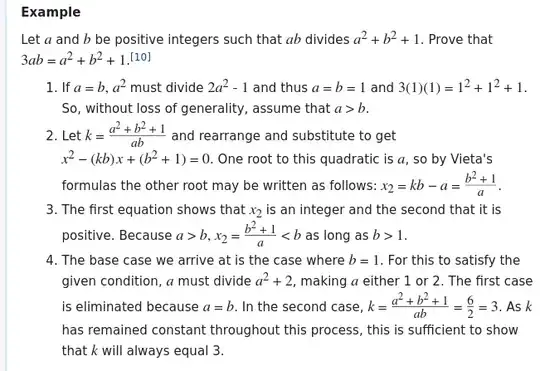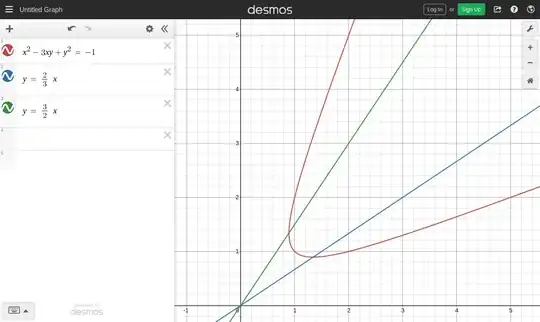Let $(F_n)$ be the Fibonacci sequence (i.e. $F_{n+2} = F_{n+1}+F_n$ with $F_{-1}=1$ and $F_0=0$).
Consider $a,b \in \mathbb{Z}_{\ge 1}$ with $a \le b$, and $D=1+a^2+b^2$, such that $a$ and $b$ divide $D$.
Question: Must the ordered pair $(a,b)$ be equal to $(F_{2n-1},F_{2n+1})$ for some $n \ge 0$?
Remark: It was checked (by SageMath) for $b<10^5$.
Note that $F_{2n\pm1}$ divides $1+ F_{2n-1}^2 + F_{2n+1}^2$ thanks to the following identity:
Proposition: $1+ F_{2n-1}^2 + F_{2n+1}^2 = 3F_{2n-1}F_{2n+1}$.
proof: Apply Cassini's identity (below) with $2n$, then $F_{2n-1}F_{2n+1} = 1 + F_{2n}^2$. Now by definition, $F_{2n} = F_{2n+1} - F_{2n-1}$. Then
$$ F_{2n-1}F_{2n+1} = 1 + (F_{2n+1} - F_{2n-1})^2 = 1 + F_{2n+1}^2 - 2F_{2n+1}F_{2n-1} + F_{2n-1}^2.$$
The result follows. $\square$
Cassini's identity: $F_{n-1}F_{n+1} = (-1)^n + F_n^2$.
proof: $F_{n-1}F_{n+1} - F_n^2 = \det \left(\begin{matrix} F_{n+1} & F_n \\ F_n & F_{n-1} \end{matrix} \right) = \det \left[\left(\begin{matrix} 1 & 1 \\ 1 & 0 \end{matrix} \right)^n \right] = \left[\det \left(\begin{matrix} 1 & 1 \\ 1 & 0 \end{matrix} \right) \right]^n = (-1)^n$. $\square$

